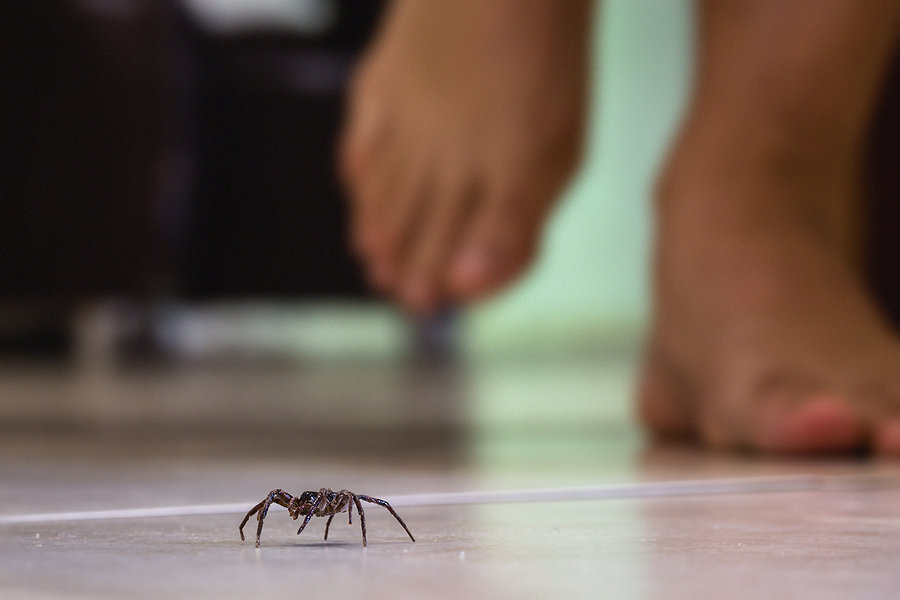Nothing says “Halloween” like spotting a few cobwebs around the house! While it’s always fun to see cobweb decorations during this time of year, it’s not as fun having to deal with them year-round. Since the temperatures have cooled off, many spiders are looking indoors to inhabit a warmer environment. It’s important to understand common types of spiders in order to provide the best treatment if they’ve infested your home.
Brown Recluse
The brown recluse spider is light to dark brown, with a signature brown violin shape on its backs. If threatened, these spiders will bite, which can be painful and leave an open sore. If bitten, some can experience fever, restlessness, and difficulty sleeping. Brown recluse spiders can be found in debris and woodpiles. If they’ve snuck inside your home, they can often be found under furniture, inside storage items, in baseboards, closets, and crawlspaces.
Wolf Spider
Wolf spiders are dark brown with paler stripes or markings and long, spiny legs. These spiders are large and hairy across their bodies. While these spiders will bite, it’s rare that they do and are not a significant threat to humans. Inside homes, wolf spiders tend to stay near or on the floor, especially along walls and under furniture where they chase their prey instead of capturing them in their webs. If outside, they like to inhabit firewood piles, leaves, yard debris, and stones.
Common House Spider
House spiders can vary in color but are usually yellow to brown with elongated abdomens. Although not a threat to humans, they are a nuisance to have in the home as they can produce and leave behind webs throughout the house. They can often be found in ceiling corners, under furniture, and inside closets, basements, garages, and crawlspaces. If outside, you will commonly find them spinning webs around windows, under eaves, and near light sources that attract food.
By recognizing each spider species and knowing where they most often inhabit, you can utilize the correct preventative measures to eliminate the chance of an infestation. Check out some of these easy do-it-yourself spider prevention tips:
- Keep garages, attics, and basements clutter-free.
- Avoid leaving clothes and shoes on the floor.
- Seal any cracks and crevices around the home.
- Call a professional pest control company. They will perform an inspection and provide you with the correct treatment and prevention plan for any spiders seen throughout your property.

